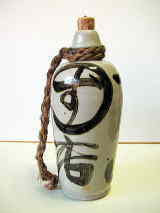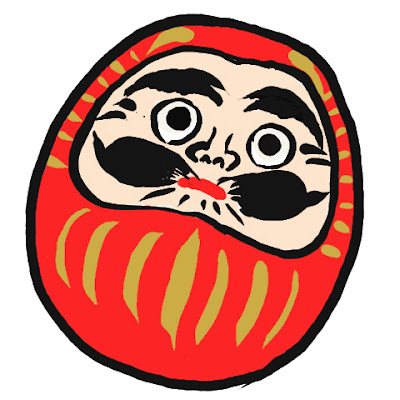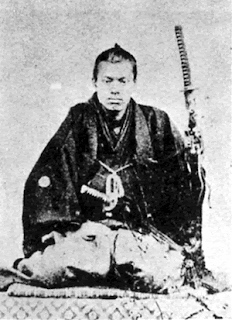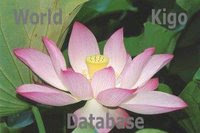:::::::::::::::::::::::::::::::::::::::::::::::::::::::::::::::::::::::::::::::::::::::::::::::::::::
Sake flask, tokkuri 徳利
A sake flask with the three gods of good luck and a small plaque with Daruma as decoration.
From the kiln 古青窯(Koseigama)
Kutani Pottery
Three Gods of Good Luck and Daruma
三福神・達磨



© store.shopping.yahoo.co.jp/waza
:::::::::::::::::::::::::::::::::::::::::::::::::::::::::::::::::::::::::::::::::::::::::::::::::::::

Sent by our Daruma friend
Pierre Monteux
Daruma Forum
:::::::::::::::::::::::::::::::::::::::::::::::::::::::::::::::::::::::::::::::::::::::::::::::::::
Tokkuri - Drinking Hot Sake with Daruma
quote
Generic term for ceramic flasks used to warm and serve sake, usually with a narrow neck for retaining heat. Tokkuri come in all shapes and sizes. Usually holds about 360 ml. of sake. The most popular styles are Bizen, Iga, Shigaraki, Imari, and Mino. Click here to learn about each of these styles in our Pottery Guidebook. Choshi is another term for tokkuri, but most often choshi are made of metal and have a handle.
You can find all the necessaray information about Tokkuri and their various forms on this extensive HP of Robert Yellin.
The most common form is probably
the form of a scallion (rakkyoo 辣韮) ,
the head of a crane (tsurukubi 鶴首) or
in form of a turnip (kabura 蕪).
http://www.e-yakimono.net/html/flask-shapes.htm
There is also an article about the ZEN of Tokkuri.
http://www.e-yakimono.net/html/zen-sv.html
Robert Yellin has a lot more stories about Tokkuri.
... Search Robert Yellin Pages
:::::::::::::::::::::::::::::::::::::::::::::::::::::::::::::::::::::::::::::::::::::::::::::::::::::

kayoi-tokkuri, kayoidokkuri, kayoi-dokkuri 通い徳利
binboo tokkuri, binboodokkuri 貧乏徳利 for the poor
binboodaru 貧乏樽 bimbodaru, Tokkuri for the poor
This TOKKURI is a traditional Japanese item not only in the YAHO area but everywhere in Japan during the early Showa period. A KAYOI-TOKKURI was used to buy SAKE at a store and carry it home in the bottle. Usually it belonged to the store and had the name of the store in big Chinese letters written on it. The neck part was formed to hold back a string for carrying the bottle and nowadays it is closed with a cork.
This kind of tokkuri was also used for buying soy sauce.
. . . CLICK here for Photos !
. . . CLICK here for Photos of "Binbo Tokkuri"!
Even Daruma san has made its way on this tokkuri !

春雨や貧乏樽の梅の花
harusame ya binboodaru no ume no hana
spring rain -
some plum blossoms
in a poor man's sake flask
. Kobayashi Issa 小林一茶 in Edo .
It might also be a plum blossom design on a sake flask.

spring rain -
some plum blossoms
on a poor man's sake flask
:::::::::::::::::::::::::::::::::::::::::::::::::::::::::::::::::::::::::::::::::::::::::::::::::::::
. Edo no shokunin 江戸の職人 Edo craftsmen .
tokkuri shirushitsuke shokunin 徳利印付職人
craftsmen printing the name of the owner on the Tokkuri

source : edoichiba.jp/edoichiba . tokurisirusituke...
:::::::::::::::::::::::::::::::::::::::::::::::::::::::::::::::::::::::::::::::::::::::::::::::::::::
Atsukan 熱カン
Hot Rice Wine in a Tokkuri
When sake is served hot, it is put in a small pottery bottle called tokkuri. The tokkuri is placed in a hot bowl of water until the sake reaches the correct temperature (about 50 degrees C), although many Japanese use microwaves today.
You can read a lot more about making and drinking sake from the extensive HP of this Sake Museum.
There is also a Japanese HP.
source : www.yamasa.org
:::::::::::::::::::::::::::::::::::::::::::::::::::::::::::::::::::::::::::::::::::::::::::::::::::::::

- source : kuramoto/hams
.......................................................................

- source : cplus.if-n.biz/5000770/partysub
:::::::::::::::::::::::::::::::::::::::::::::::::::::::::::::::::::::::::::::::::::::::::::::::::::::::
My articles
Kutani-yaki 九谷焼 <> Kutani Pottery, Kutaniyaki
Sakazuki - Small cups to drink Sake 杯 とだるま
Sake and Daruma / My Photo Album
. Sake and Daruma San
Tokkuri - Drinking Hot Sake with Daruma 徳利とだるま
BACKUP TEXT only
:::::::::::::::::::::::::::::::::::::::::::::::::::::::::::::::::::::::::::::::::::::::::::::::::::::
H A I K U

kayoichoo、tsuuchoo 通帳 credit account book
正月や現金酒の通ひ帳
shoogatsu ya genkin sake no kayoichoo
this New Year -
sake all payed for
in my credit account book
Kobayashi Issa
see Kayoi-Tokkuri 通い徳利 above.
The bills were usually payed before the New Year to have a clean account book.
. last payment of the year, kakegoi 掛乞 かけごい .
.......................................................................

Sagara tsuchi ningyoo 相良土人形 clay doll from Sagara, Yamagata
. 大福帳持ち福禄寿 Fukuroju with an account book .
daifukuchoo 大福帳 account book
daichoo 大帳, honchoo 本帳, oboe 大宝恵
長き日や大福帳をかり枕
nagaki hi ya daifukuchoo o kari makura
a long day --
his account book serves
as a pillow
Tr. David Lanoue

:::::::::::::::::::::::::::::::::::::::::::::::::::::::::::::::::::::::::::::::::::::::::::::::::::::

和尚また徳利さげくる月の夜
oshoo mata tokkuri sage-kuru tsuki no yo
the priest comes again
with his sake flask dangling from his hand ...
night with a full moon
Kawabata Bosha (Kawabata Boosha 川端茅舎, 1897 - 1941)
:::::::::::::::::::::::::::::::::::::::::::::::::::::::::::::::::::::::::::::::::::::::::::::::::::::
. Matsuo Basho 松尾芭蕉 - Archives of the WKD .

呑明て花生となる二升樽 - nomi-akete hana-ike to naru nishoodaru
呑明て 花生 にせん二升樽 - nomi akete hana-ike ni sen nishoodaru
drinking it all up,
let’s make it into a flower vase:
the four liter wine barrel.
Tr. Barnhill
quote
Finishing our drink —
lets arrange these flowers in
this sake bottle—flower vase
Here Basho recollects a line of poetry from Tu Fu.
This sake bottle now changed into a flower vase. For a while Li Po and Tu Fu shared a brief friendship, exchanging poems with each other. Li Po is thought of as being earthy, while Tu Fu as that of the moon. Li Po is at his best when drunk and happy, like a lark singing at heaven’s gate. Tu Fu wrote his best poems when angry, like a nightingale singing with his throat against a thorn.
Nearly a thousand years passed and Basho helped perpetuate their poems in his own writing .
- Tr. and Comment : Bill Wyatt
. Matsuo Basho - Saga Nikki 嵯峨日記 Saga Diary .
:::::::::::::::::::::::::::::::::::::::::::::::::::::::::::::::::::::::::::::::::::::::::::::::::::::

- My Daruma and the mosquito
:::::::::::::::::::::::::::::::::::::::::::::::::::::::::::::::::::::::::::::::::::::::::::::::::::::::::::::::::::::::::::
sakedaru 酒樽 sake barrels
they are often offered to Shrines and displayed there.
Here are two samples with Mount Fuji decoration.
Click on the photos for more!


source : Philippe on facebook
:::::::::::::::::::::::::::::::::::::::::::::::::::::::::::::::::::::::::::::::::::::::::::::::::::::
. Sake 酒 for rituals and festivals .
[ . BACK to DARUMA MUSEUM TOP . ]
[ . BACK to WORLDKIGO . TOP . ]
:::::::::::::::::::::::::::::::::::::::::::::::::::::::::::::::::::::::::::::::::::::::::::::::::::::






















































